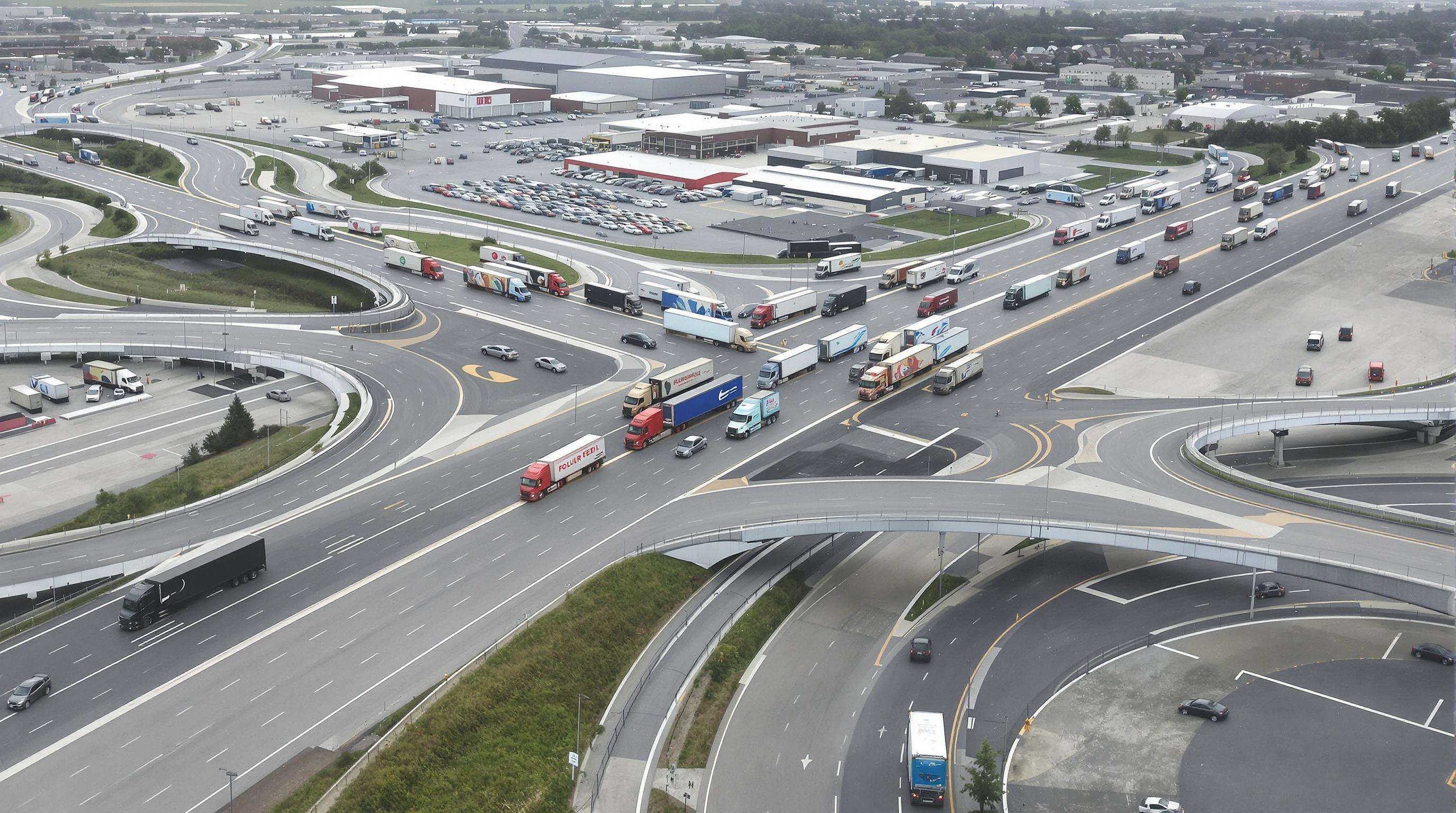Strategic Planning in United Road Logistics Operations
Foundations of Logistics Planning in United Road's Model
When it comes to logistics planning, United Road has cracked the code by mixing long term thinking with day to day flexibility. Their facilities are placed right where the market needs them most, which cuts down on how long goods spend in transit and keeps expenses under control. The company uses smart data analysis alongside quick decision making to get resources exactly where they need to be during those unpredictable delivery periods when capacity gets tight. According to recent industry reports, this method saves between 12 and 18 percent on yearly transport bills compared to what other companies typically spend.
Key Steps in the Logistics Planning Process for Operational Efficiency
- Network Design: Distribution hubs are strategically located based on freight volume and customer density.
- Demand Forecasting: AI-driven tools predict shipment fluctuations with 94% accuracy.
- Contingency Protocols: Rapid-response workflows address weather disruptions and supply chain bottlenecks.
A centralized Transportation Management System (TMS) synchronizes these steps, reducing planning cycle times by 30% compared to manual processes.
Integrating Supply Chain Planning and Execution Frameworks
With United Road, companies get real time updates on where shipments are, who's available to drive them, and how fast warehouses can process goods. The system actually cuts down those pesky last mile delivery problems by around 22%, keeping things on track most of the time with an impressive 98.6% on schedule finish rate. What makes it work so well? Simple really. Data from daily operations like how much gas trucks burn or when drivers take alternate routes gets sent back to planners automatically. This creates this sort of learning loop where every day brings better decisions for tomorrow's deliveries.
| Planning Phase | Execution Integration Tool | Efficiency Gain |
|---|---|---|
| Route Design | Dynamic GPS Re-Routing | 15% Fuel Reduction |
| Inventory Allocation | RFID Warehouse Tracking | 8% Faster Order Fulfillment |
| Carrier Selection | Automated Load-Balancing TMS | 12% Cost Avoidance |
Treating planning and execution as interconnected functions allows United Road to maintain resilience, speed, and cost efficiency across its supply chain.
Network and Route Optimization in United Road Logistics Operations

Advanced Route Optimization Techniques for Faster Deliveries
At United Road, their system uses artificial intelligence to figure out the best routes by looking at more than 15 different things at once. These include what's happening with traffic right now, current weather conditions, and when packages need to be delivered. The AI keeps changing routes as needed based on all this info. As a result, drivers cover about 18 percent fewer miles on average, and they still manage to deliver almost everything on time, hitting around 99.2% accuracy according to Logistics Tech Quarterly from last year. Some important parts of how it works are arranging multiple stops together where possible, creating fuel efficiency models specific to each type of truck, and predicting potential accident risks by analyzing past road incidents. All these elements combine to make deliveries both faster and safer across the board.
Scalable Network Design for Efficient Freight Transport
United Road's hub-and-spoke setup cuts down on cross-docking time by around 23% compared to what most companies see industry-wide. They've got these 14 regional warehouses spread out across the country in smart locations, which really helps cut back on those wasted driving hours between empty trips. The logistics team mixes rail and truck routes pretty cleverly too, saving about $74 per shipment according to some research from Ponemon back in 2023. What makes this system special is how it can handle growing demand without needing major changes to existing facilities. From handling just 500 packages a day up to pushing through 5,000 without breaking a sweat or spending extra bucks on new buildings.
Balancing Cost and Coverage in Transportation and Distribution
United Road achieves 96.7% geographic coverage while keeping last-mile expenses 14% below competitors through dynamic zone partitioning, hybrid fleet utilization (company-owned and contracted vehicles), and predictive load consolidation. These strategies allow service to remote areas like rural Appalachia with 31% fewer fuel stops than conventional models.
Case Study: Efficiency Gains Through Dynamic Network Redesign
In 2022, a network overhaul in the Midwest operational zone reconfigured delivery routes and redistributed inventory across three key warehouses, resulting in:
| Metric | Pre-Optimization | Post-Optimization | Improvement |
|---|---|---|---|
| Average Delivery Time | 42 hours | 29 hours | 31% faster |
| Fuel Costs per Shipment | $18.74 | $13.12 | 30% savings |
| Customer Complaints | 12.4/month | 3.1/month | 75% reduction |
The redesign preserved full service area coverage and expanded same-day delivery access to 28% of customers previously served within two days.
Technology Integration in United Road Logistics Operations

Transportation Management Systems (TMS) as the Operational Backbone
Transportation Management Systems serve as the central nervous system of United Road's logistics operations, unifying load optimization, carrier selection, and compliance. Machine learning-powered TMS platforms automate 85% of routing decisions and reduce human error. Integration with warehouse management systems cuts dock idle time by 22%, directly lowering operational costs.
Real-Time Tracking for End-to-End Freight Visibility
IoT sensors and real-time GPS provide granular visibility into shipment location, temperature, and handling conditions. This capability enables proactive rerouting around disruptions such as severe weather, improving on-time delivery performance by 15% over traditional tracking methods.
AI and Predictive Analytics in Logistics Decision-Making
The company uses predictive analytics based on past demand trends plus outside factors like weather conditions and fuel costs to predict how much freight will move around. With these predictions, United Road manages to get their trucks and equipment ready somewhere between two days to three full days before they expect big jumps in demand. This approach cuts down on those frustrating empty trips across the country by about 18 percent each year according to what we've seen so far. Looking at what other companies are doing too, implementing similar artificial intelligence systems seems to cut down on wasted money spent on extra stock sitting around warehouses somewhere in the neighborhood of seven hundred forty thousand dollars per location annually.
Automation and Next-Gen Solutions in Distribution
In advanced distribution centers, automated guided vehicles (AGVs) and robotic sortation systems handle 40% of warehouse tasks. Integrated with AI-driven inventory systems that adjust stock levels in real time, these technologies reduce overstock incidents by 27% while maintaining 99.6% order accuracy.
Performance Monitoring and Continuous Improvement
United Road maintains industry-leading efficiency through disciplined performance tracking and iterative refinement. Three core pillars guide this process: measurable KPIs, analytics-powered optimization, and strategic balance between cost and service.
Key KPIs for Measuring Logistics Efficiency
The company tracks seven core metrics, including a 97.4% on-time delivery rate (2023) and a fleet-wide fuel efficiency of 6.8 MPG. Real-time trailer utilization monitoring via IoT sensors reduced empty miles by 15% last year (Ponemon 2023).
Data-Driven Supply Chain Analysis and Optimization
Business intelligence tools process 2.3 million data points monthly from GPS, weigh stations, and warehouse systems. This infrastructure powers predictive analytics that improve load consolidation by 18%, according to transportation optimization studies.
Balancing Cost Reduction with Service Quality
A proprietary Total Cost of Ownership (TCO) model evaluates 12 financial variables across equipment lifecycles. While maintaining 99% delivery accuracy, United Road reduced per-mile operating costs by 11% between 2021 and 2023 through driver efficiency programs and dynamic routing.
Customer-Centric Execution in United Road Logistics
Enhancing Customer Trust Through Freight Visibility and Communication
Most shippers really care about transparency these days. According to LinkedIn's 2025 Logistics Trends report, around 84% say having real time freight tracking is basically essential if they want to build trust with their partners. United Road gets this need and addresses it through those fancy IoT sensors plus automatic status updates. This actually reduces those pesky manual check in requests by about two thirds. The system sends out early warnings when something might go wrong with delivery schedules. Instead of waiting until there's a problem and scrambling to fix it, customers can work together with United Road to find solutions before things get messy on the road.
A centralized visibility platform enables clients to monitor shipments in detail, from temperature changes in perishable goods to precise arrival estimates. Research indicates that logistics providers using real-time tracking resolve disputes 78% more efficiently.
Linking Delivery Efficiency to Customer Satisfaction
On-time performance directly influences retention: companies achieving 98%+ on-time delivery rates experience 30% higher repeat business. United Road enhances last-mile execution with dynamic routing algorithms that adapt to traffic and weather, reducing failed delivery attempts by 40% without compromising fuel efficiency.
The link between operations and satisfaction is quantifiable: a 10% improvement in route accuracy correlates with a 22% increase in customer satisfaction scores. By aligning warehouse dispatch schedules with carrier availability, United Road prevents bottlenecks that degrade service quality.
FAQ
What is the main strategy used by United Road for logistics planning?
United Road combines long-term strategic planning with day-to-day flexibility to optimize logistics, strategically placing facilities and utilizing smart data analysis for efficient resource allocation.
How does United Road ensure efficient route optimization?
They use AI-driven systems to constantly evaluate multiple factors including traffic and weather conditions, adjusting routes dynamically to ensure timely deliveries while reducing travel distances.
What technologies are integrated into United Road's logistics operations?
United Road employs Transportation Management Systems, IoT sensors, real-time GPS, and AI-driven analytics to enhance their logistics operations, streamline processes, and maintain high efficiency.
How does United Road improve customer satisfaction?
Through real-time freight tracking, dynamic routing algorithms, and proactive communication using IoT sensors, United Road focuses on transparency and reducing delivery disruptions, directly boosting customer trust and satisfaction.

